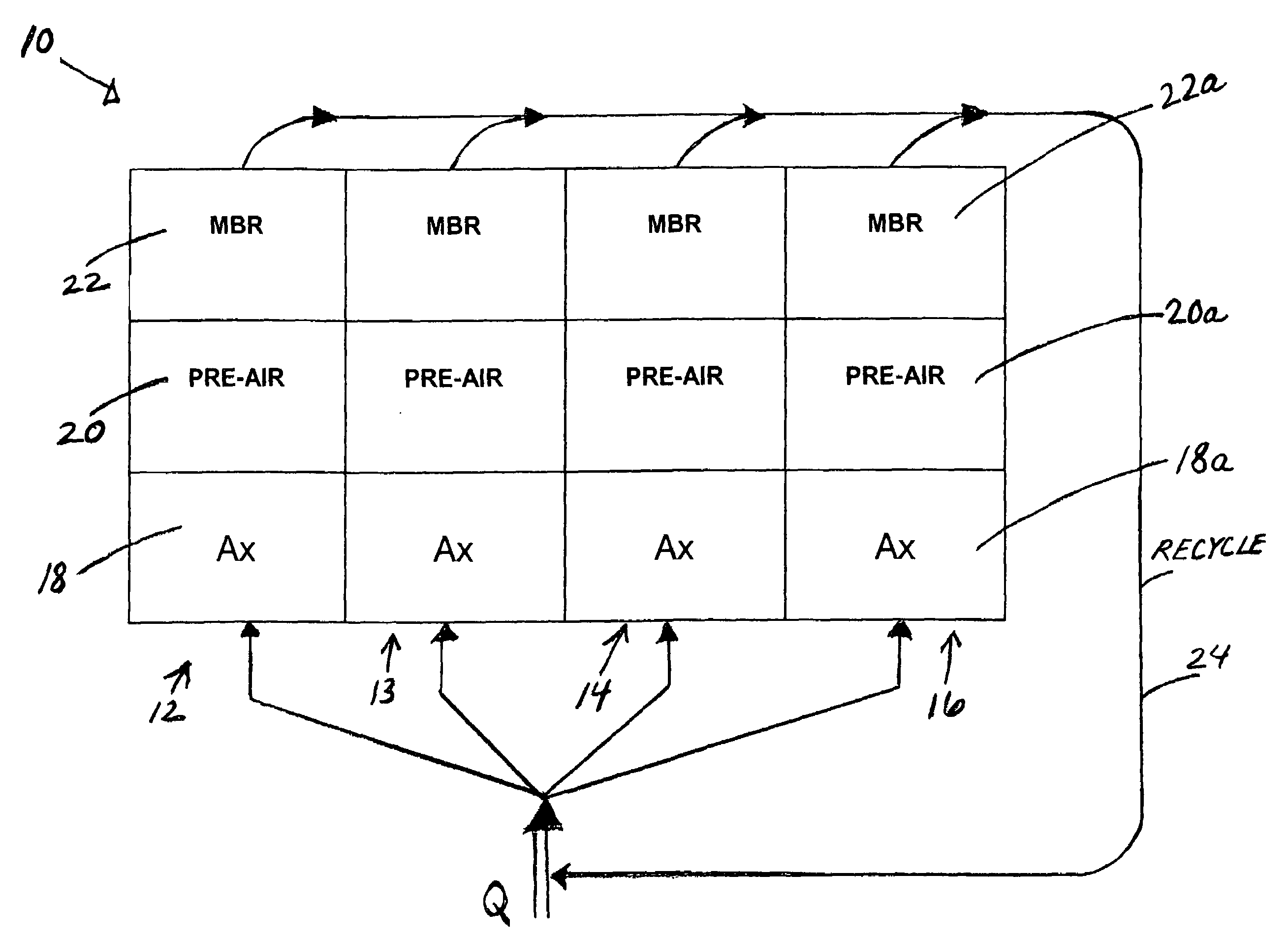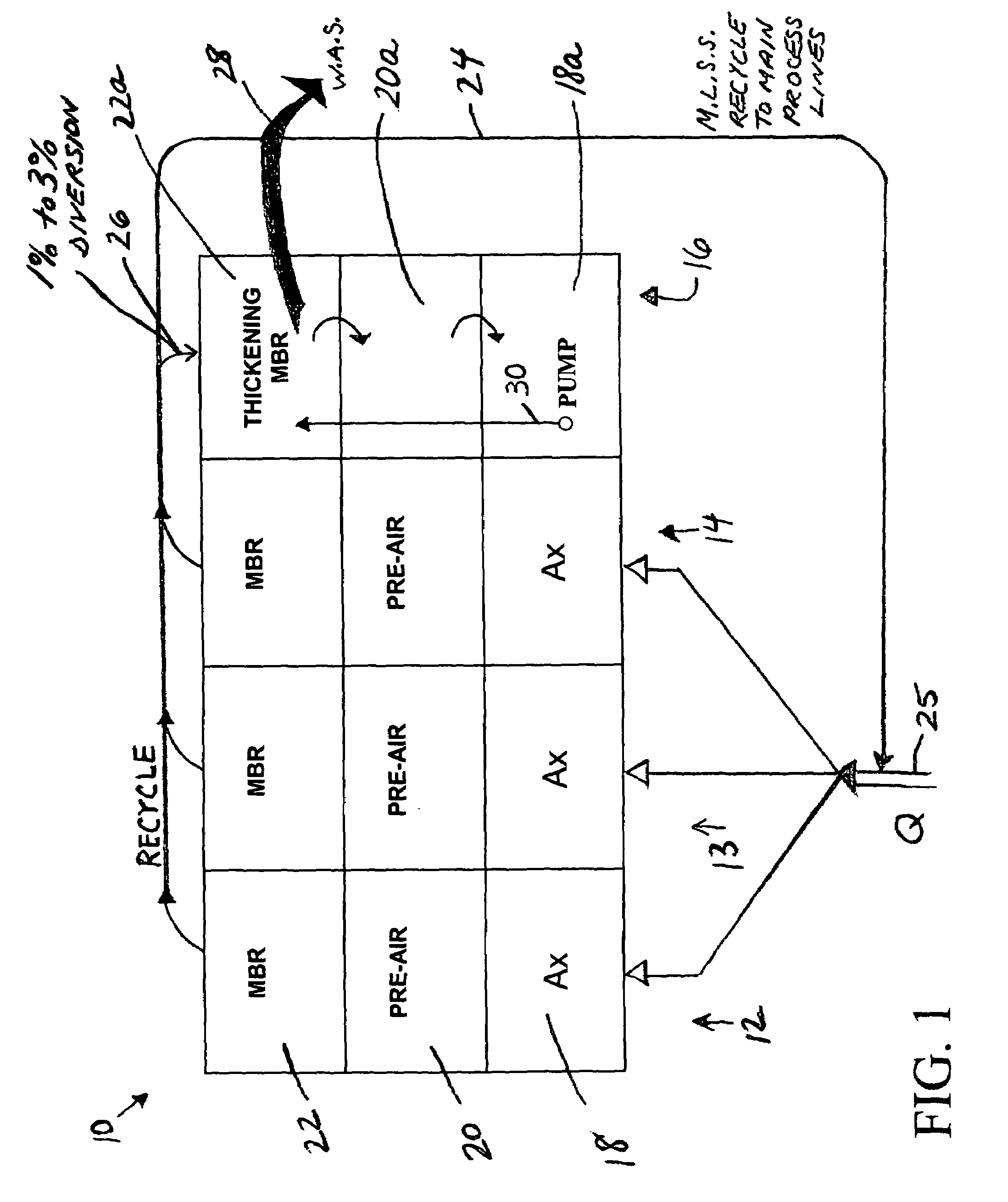Wastewater treatment system with membrane separators and provision for storm flow conditions
a technology of storm flow and sewage treatment system, which is applied in the direction of biological water/sewage treatment, multi-stage water/sewage treatment, sustainable biological treatment, etc., can solve the problems of limited peak flow conditions of mbrs, high cost and excess capacity of normal flow
- Summary
- Abstract
- Description
- Claims
- Application Information
AI Technical Summary
Benefits of technology
Problems solved by technology
Method used
Image
Examples
example
Three normal process lines, one special process line, 1 mgd design flow, 3Q peak flow
Normal Operation
2 or 3 MBR's operational
1 MBR Thickening to 30,000 mg / l (3% solids)
Feed at 10,000 mg / l from the recycle stream (1% solids)
Peak Flow Operation
All four MBR's operate in same manner, in parallel M.L.S.S. in thickening MBR included in recycle providing additional biomass redistributed over all 4 basins
3 at 10,000; 1 at 30,000
4 at 15,000 mg / l, as redistributed
1 mgd example with 3Q peaking factor (1.5 mgd of membranes since membranes can handle up to double design flow)
4 basins MBR
Each Basin Designed to Handle
3 mgd÷(2×4)=0.375 mgd
Total membranes=12,000 (based on 125 gpd design flow / membrane)
Use 8×EK400* / basin=12,800 cartridges *EK400: Kubota model designation
MBR basin Volume 5390 ft3×7.48 ft3 / gal×4 basins=161,269 gallons (based on tank volume recommendation for MBR area?)
Pre-Air=100,000 gallons (based on B.O.D.)
Anoxic volume 80,000 gallons (based on organic load and effluent requirements)=...
PUM
| Property | Measurement | Unit |
|---|---|---|
| concentration | aaaaa | aaaaa |
| Volume | aaaaa | aaaaa |
| volume | aaaaa | aaaaa |
Abstract
Description
Claims
Application Information
 Login to View More
Login to View More - R&D
- Intellectual Property
- Life Sciences
- Materials
- Tech Scout
- Unparalleled Data Quality
- Higher Quality Content
- 60% Fewer Hallucinations
Browse by: Latest US Patents, China's latest patents, Technical Efficacy Thesaurus, Application Domain, Technology Topic, Popular Technical Reports.
© 2025 PatSnap. All rights reserved.Legal|Privacy policy|Modern Slavery Act Transparency Statement|Sitemap|About US| Contact US: help@patsnap.com



